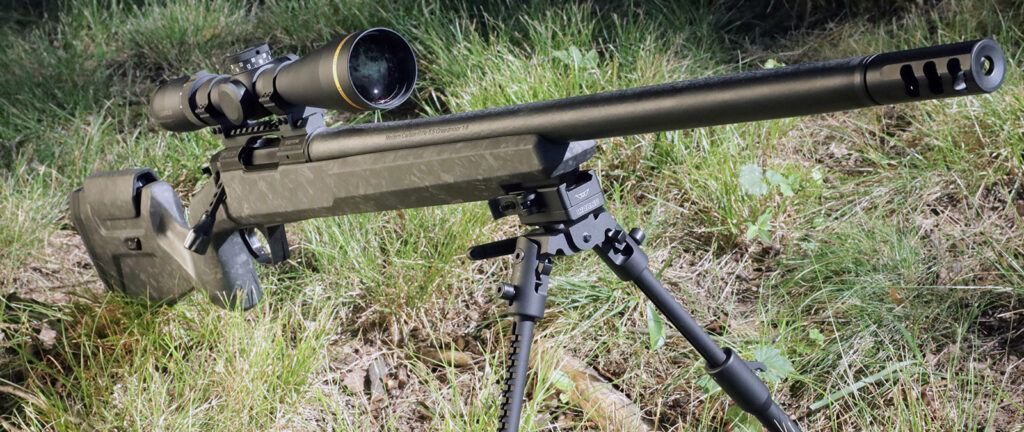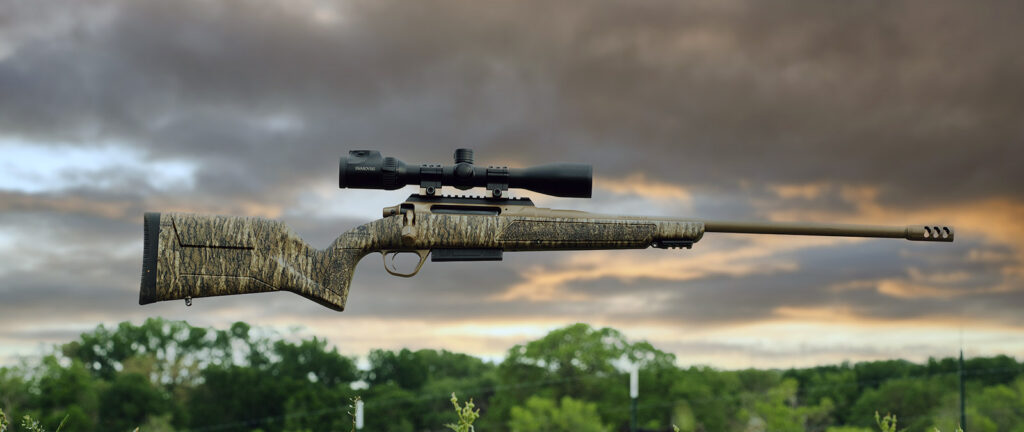
This is the final installment of a three-part series from our friends at Christensen Arms. Don’t miss your chance to win big! Enter now for a FREE shot at Christensen Arms gift cards: $500 for first place, and $250 each for second and third place winners.
NOTE: Gift cards can only be used on the christensenarms.com web store, and cannot be used to purchase firearms.
Author – Brad Fitzpatrick
If you’re looking to get into a spirited debate with your fellow hunters, spark up a conversation about mountain rifle weight. As with just about any topic related to hunting and firearms, you’re guaranteed to hear a wide variety of passionate opinions.
The “Weight Doesn’t Matter” Argument
Legacy is woven into the fabric of hunting. The love of hunting is frequently passed down from generation to generation, often accompanied by deep seated beliefs and rituals – and equipment.
One can’t argue that hunters from generations past had dramatically different options at their disposal when it came to gear selection. Blue jeans and wool jackets were frequently worn in place of camo. Hiking boots were nowhere near as comfortable as modern options. Optics were less advanced and weighed considerably more. And hunting rifles were nowhere near as sophisticated as modern-day offerings from high-tech manufacturers like Christensen Arms.
And yet, hunters still found success. That doesn’t mean, however, that you should carry a heavy hunting rifle just because past generations did it. To me, the weight of a backcountry hunting rifle isn’t about efficacy; it’s about efficiency.
The Recoil Argument
Another common argument you’re likely to hear from those who view lightweight hunting rifles as a fad is, “the recoil on lightweight rifles is awful.”
It takes a big cartridge to kill an elk, which leads many big game hunters to cartridges like .300 Winchester Magnum, 7mm PRC, 6.5 PRC, 30-06, and other high-powered rounds. These cartridges are notorious for their recoil, but modern advancements in muzzle brake and suppressor technology have tamed felt recoil substantially.
Take Christensen Arms’ RFR-style muzzle brake. The brake’s design is highly effective at mitigating recoil by expending gas at an angle that counteracts the kick of high caliber rifles. Although loud, these brakes will save your shoulder and put you in position to take a quality follow-up shot, when needed.

Additionally, modern suppressors offer palpable recoil reducing efforts – along with substantial noise reduction. Plus, they make it difficult for game animals to pinpoint where a shot came from, offering a tactical advantage when a follow-up shot is needed.
In short, today’s technology weakens the recoil argument significantly.
Advancements in Nutrition and Fitness
Before we talk more about lightweight hunting rifles, it’s important to note another key difference between modern hunting and that of our parents and grandparents: how far fitness and nutrition have evolved – especially for backcountry hunters.
An increased focus on health and physical capability isn’t unique to the hunting world, but it has clearly changed how hunters prepare to go out into the wilderness. Companies like 1st Phorm, MTN OPS, and Protekt Products have built potent businesses creating cutting-edge products for hydration, supplementation, energy, recovery, and focus – allowing hunters to go farther, faster.

Today’s hunters prepare a lot differently in terms of physical fitness, as well.
Elk hunts are expensive, and modern hunters prepare accordingly. Regardless of whether you’re hunting with a guide or grinding to escape intense pressure to fill your tag in a competitive hunting unit, if you’re going to invest your time and money to chase elk, you need to be physically capable of putting yourself in position to be successful. That often means hiking for longer periods of time through rugged terrain at high altitudes. Elk are also fast and elusive, so speed is of the essence. Plus, if you’re lucky enough to get a massive elk on the ground, your work has only just begun – mountain packouts are among the most grueling physical challenges you can take on.
The Case for Cutting Weight
You’ve probably heard the adage, “ounces equal pounds, and pounds equal pain.” This is as true a statement as there has ever been. Manufacturers of just about every hunting product imaginable have spent years investing in, researching, testing, and perfecting lightweight materials and components to make the strongest, lightest products for hunters. Binos, optics, packs, boots, suppressors, clothing, camping equipment – products in every one of these categories have steadily increased in quality and decreased in weight over the years.
Naturally, rifle manufacturers have followed suit.
Leading the pack in lightweight hunting rifles is Christensen Arms. Since 1995, the company has been building some of the best, lightest, most accurate rifles money can buy – right here in the USA. Rooted in Utah, they’re no strangers to physically demanding hunts.
As mentioned in a previous article about modern elk rifles, Christensen Arms pioneered a cutting-edge new carbon fiber manufacturing process, which it calls Flash Forged Technology, or FFT. This space-age technology has enabled the company to build rifles that are a full pound lighter than comparable models with carbon composite stocks.
And when pounds equal pain, shaving a pound off the weight of your rifle is a massive advantage.
FFT can be found on many of Christensen Arms’ hunting rifles, including the Ridgeline FFT, Ridgeline FFT Titanium, Mesa FFT, Modern Carbon Rifle, Modern Precision Rifle, and Modern Hunting Rifle. Ranging from just 4.8 pounds to 7.4 pounds, the company’s portfolio of lightweight, accurate – each of these rifles carries a Sub-MOA Accuracy Guarantee – hunting rifles offers the diversity modern hunters demand at a variety of price points to suit a variety of budgets.
Additionally, the company introduced a groundbreaking rifle at SHOT Show 2024, the Evoke, which offers unmatched features at a starting MSRP of just $898. If you’re familiar with Christensen Arms’ reputation, you know that’s an incredible price point to own a rifle from a world-class manufacturer. The Evoke features a polymer stock and offers premium features like an adjustable TriggerTech® trigger, Cerakoted 416R stainless steel #4 precision contoured barrel, RFR-style brake, forward Picatinny rail, detachable magazine, and hybrid grip angle. At a starting weight of 7.7 pounds, it’s not the lightest in Christensen Arms’ portfolio – but it’s still in line with competing models, and it offers features that other in that price point don’t.

Is Lighter Better?
Will a rifle weighing 10+ pounds when outfitted with an optic and the accessories of your choice get the job done when hunting elk? Most certainly. It did for past generations of hunters, and there’s a very good chance it will for you, too.
However, carrying a modern, lightweight hunting rifle comes with significant advantages.
Shaving pounds off your mountain rifle will not only help you move faster and hike longer, it also affords you more room in your kit for essentials like water, food, additional layers, or other first aid supplies. And when you’re deep in the field, those things can have immense value.
Better is subjective, but it’s impossible to ignore the value that lightweight hunting rifles bring to the table. If you give me the option to cut a pound or more off the weight of my elk rifle, I’ll take that opportunity every time.
Don’t miss your chance to win big! Enter now for a FREE shot at Christensen Arms gift cards: $500 for first place, and $250 each for second and third place winners.
